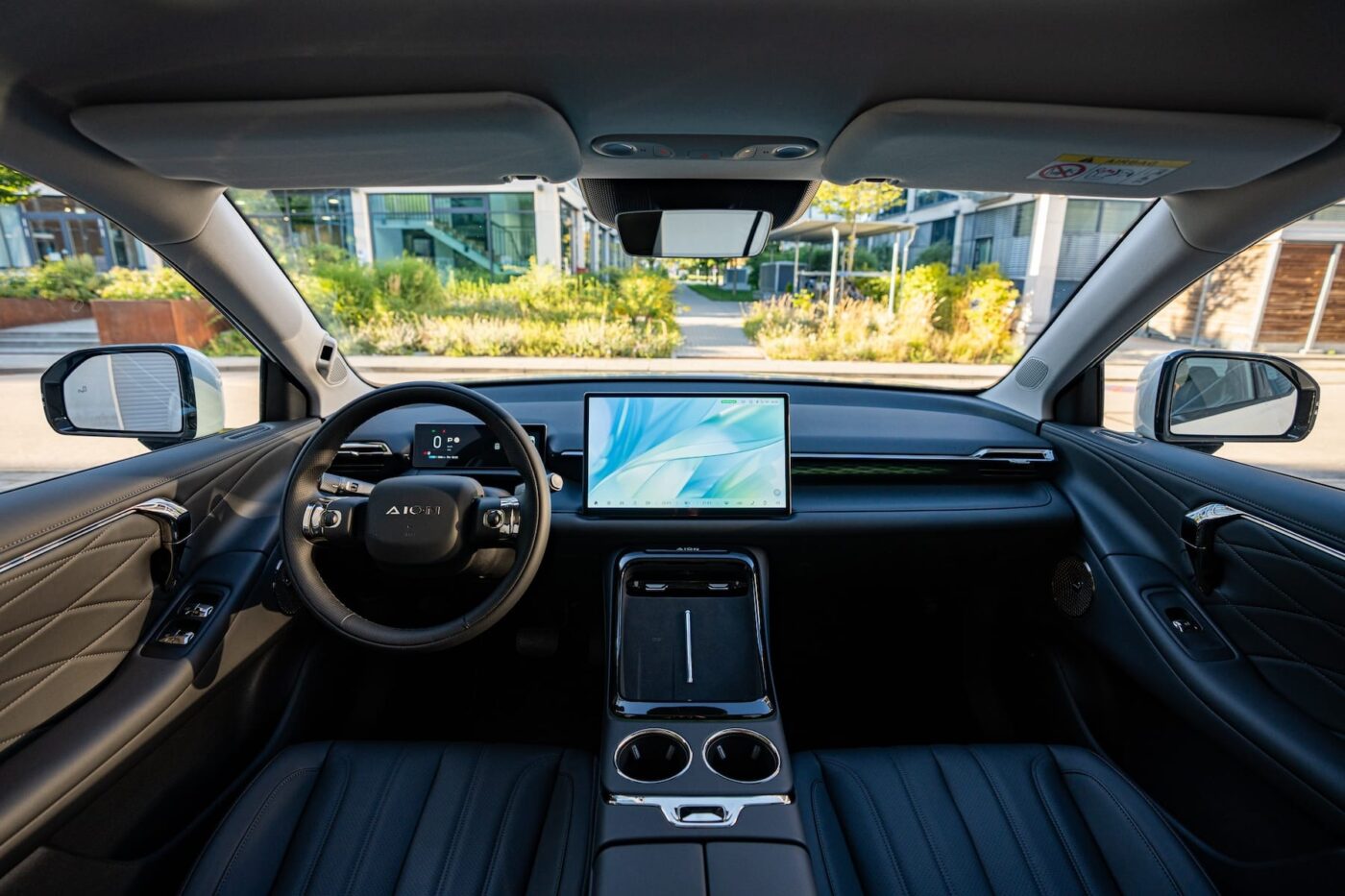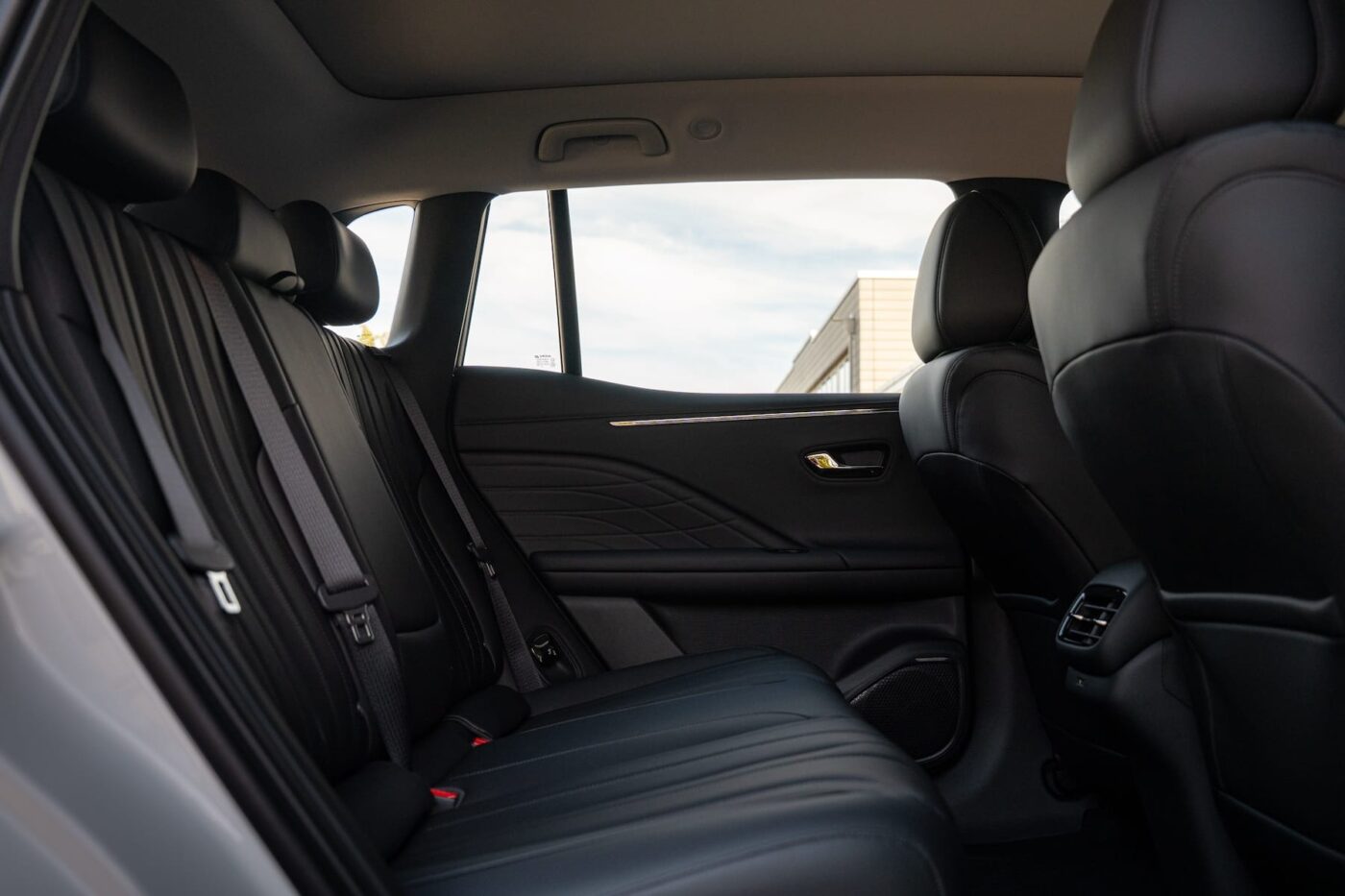
Aion V test drive report: Lavishly equipped economy SUV from China
The Chinese state-owned company GAC (Guangzhou Automobile Group) is one of China’s largest and oldest car manufacturers. The company’s history dates back to 1955, and it has also made a name for itself in the Middle East, Africa and Southeast Asia. In this country, however, the abbreviation is still largely unknown.
GAC announced at the 2024 Paris Motor Show that Europe is at the heart of the group’s expansion plans and that it also wants to have a say in the German market. Specifically, the car manufacturer is venturing into the West with its Aion brand.
It is starting with the mid-range SUV Aion V, which is set to score points with its comparatively low price of €35,990, extensive standard equipment and plenty of space. The boxy look with its cartoon-like face is also surprisingly distinctive. The model was designed at GAC’s European design centre in Milan.
The group is taking a rather leisurely approach in Europe
However, the company does not seem to be in any particular hurry to launch the vehicle on the market – GAC actually launched the vehicle in other EU countries, such as Poland, Portugal and Finland, last September. However, the carmaker’s vehicles are still not available in Germany.
It seems as if the car manufacturer wants to avoid the mistakes made by its Chinese competitors when they launched on the German market with its cautious approach. Whether it’s sales strategy, marketing or service, the group knows the importance of a well-developed dealer and service network and is therefore currently in the process of establishing partnerships with established European dealer groups.
While other Chinese manufacturers experienced long waiting times for important spare parts in the early days, GAC wants to prevent this with a central warehouse in Rotterdam. All these points are included in the ‘European market plan’ that the Chinese state-owned company presented at the IAA Mobility. During the trade fair, I had the opportunity to test drive GAC’s first European model in the Munich area.






Fairly average-sized luggage compartment
The car manufacturer emphasises the generous space available in the 4.60-metre-long, 1.85-metre-wide and 1.69-metre-high Aion V, which is intended to make it the ideal family car. So, before I start driving, I take a look at the boot.
Behind the large tailgate is a generously sized luggage compartment with a standard volume of 427 litres. When the rear seats are folded down, up to 978 litres of space is available. By way of comparison, the VW ID.4, which is very similar in size, offers significantly more storage space at 543 to 1,575 litres, and even the smaller ID.3 has well over 1,200 litres of space when the rear seats are folded down.
The angular exterior design and, above all, the generous wheelbase of 2.77 metres are noticeable in a positive way in the rear seats. Passengers in the second row have plenty of legroom and headroom. Thanks to the large windows, the rear is bright and airy.
Top-of-the-range version comes with a cooling compartment as standard
When you open the driver’s door, you are greeted by a pleasantly minimalist cockpit with a towering dashboard, on which the 14.6-inch horizontal touchscreen sits enthroned. The display impresses with its decent response time. However, there are still a few translation errors in the various menus, which are intuitively structured.
The same applies to the voice assistant, which also causes a certain amount of vicarious embarrassment among passengers. It wants to be addressed with ‘Hey Baby’, which is perhaps meant to be funny, but seems more than strange in a family SUV. The assistant executes some commands, such as increasing the temperature, without any problems.
Others, however, prove more difficult to understand. As already mentioned, the English language is not one of the Aion V’s strengths. Instead of ‘sunblind closed’, for example, the assistant says ‘sunblind turned off’. It is quite possible that GAC has made improvements in the meantime with the help of a software update.
In terms of workmanship, there is little to complain about in the interior. The choice of materials is also fine in the top-of-the-range ‘Luxury’ model we drove. The Aion V has a real party feature on board – in the form of a refrigerator in the centre console that cools down to minus 15 degrees. This means you can enjoy an ice-cold Coke while driving, or bring back a few perishable delicacies from your holiday. The front seats can also be folded down completely, making the SUV suitable for car camping.
Driving dynamics are not one of its strengths
A head-up display, on the other hand, is not even available at extra cost. However, GAC is not quite as minimalist as Tesla when it comes to the cockpit structure. Directly in the field of vision, there is another small display that shows driving information. Speaking of driving: during our test drive, which took us on the motorway, through towns and along country roads, the mid-range SUV made a mature impression.
The chassis tuning can be described as harmonious and balanced. The focus is clearly on comfort; sporting ambitions are foreign to the Aion V. The chassis design seems a little old-fashioned in places – while independent suspension all round and a multi-link rear axle are now standard in the mid-range, GAC has opted for a semi-independent rear axle in the Aion V, with the two wheels connected by a cross member.
Given its positioning as a family-friendly SUV, the comfort-oriented design makes perfect sense. However, the whole thing also feels a little too soft at times – when steering quickly, the 1.8-tonne vehicle tends to roll noticeably. Overall, the steering provides very little feedback and requires hardly any effort from the driver. In addition, noise comfort is reduced by the rolling and wind noises that are clearly noticeable at higher speeds.
| GAC Aion V | |
|---|---|
| Drive | FWD |
| Power | 150 kW |
| Torque | 210 Nm |
| Acceleration | 7.9 s |
| Top speed | 160 kph |
| WLTP Range | 510 km |
| Battery | 75.3 kWh |
| Charging capacity DC | 180 kW |
| Charging time DC 10-80% | 24 min |
| Price | 35,990 euros |
The V doesn’t exactly tear up trees
The drive system fits in with the overall comfortable image. The electric motor on the front axle always delivers 150 kW and 210 Newton metres of torque in the European version. This means that the Chinese SUV is anything but a rocket, but it is adequately motorised. It goes from zero to 100 kph in 7.9 seconds from a standing start, while the top speed is limited to 160 kph.
GAC specifies the standard consumption as 16.7 kWh according to WLTP. After our motorway-heavy test drive, the display showed an average consumption of a respectable 19.5 kWh. While the V is available with three different battery sizes in its home market, GAC will only offer it with one power storage option in this region. The company is relying on LFP chemistry for this and specifies the capacity as 75.3 kWh. This should give it a WLTP range of 510 kilometres.
Unfortunately, we were unable to verify how realistic this figure is during our short test drive. The same applies to charging performance. Until we can conduct a more detailed test, we will have to rely on the manufacturer’s specifications. The peak charging power is 180 kW – ideally, the battery should be able to be charged from 10 to 80 per cent in a brisk 24 minutes.
The Aion V draws a maximum of 11 kW of power from AC charging stations. This means it takes a leisurely eight and a half hours to recharge the empty battery. GAC promises that it will be bulletproof. And by that, the Chinese don’t mean the usual nail test – the battery is supposed to withstand even a pistol shot. However, this is likely to be typical PR exaggeration.





The family SUV impresses in terms of safety
The assistance systems made a good overall impression. The standard adaptive cruise control and lane departure warning system, in particular, performed well. Safety seems to have been a major focus in the development of this SUV. It achieved the top rating of five stars in the Euro NCAP crash test. This is further proof that the days when Chinese cars failed to meet European crash regulations are long gone.
The Aion V is set to impress in the electric mid-range SUV segment, where there is certainly no shortage of competition, with its good value for money and generous standard equipment. Even the basic ‘Premium’ version, priced at €35,990, comes with features such as heated and ventilated seats with electric adjustment, a panoramic roof, a heat pump, LED lighting and ambient lighting for the interior as standard.
Conclusion
With the Aion V, GAC has made a decent first impression on the European market. The SUV offers a largely contemporary technical basis, good comfort and a usable level of quality. However, there is certainly no shortage of strong competitors in the mid-range electric SUV segment.
Since the Aion V hardly stands out from the crowd with its features, it will have to compete on price in the local market. In fact, it offers a lot of car for the money compared to its competitors.
At the same time, the brand is still completely unknown to the general public in this country, so the manufacturer has no choice but to drum up a lot of publicity. If GAC invests sufficiently in the dealer and service network as promised, the Chinese could achieve a respectable success with the V.




0 Comments